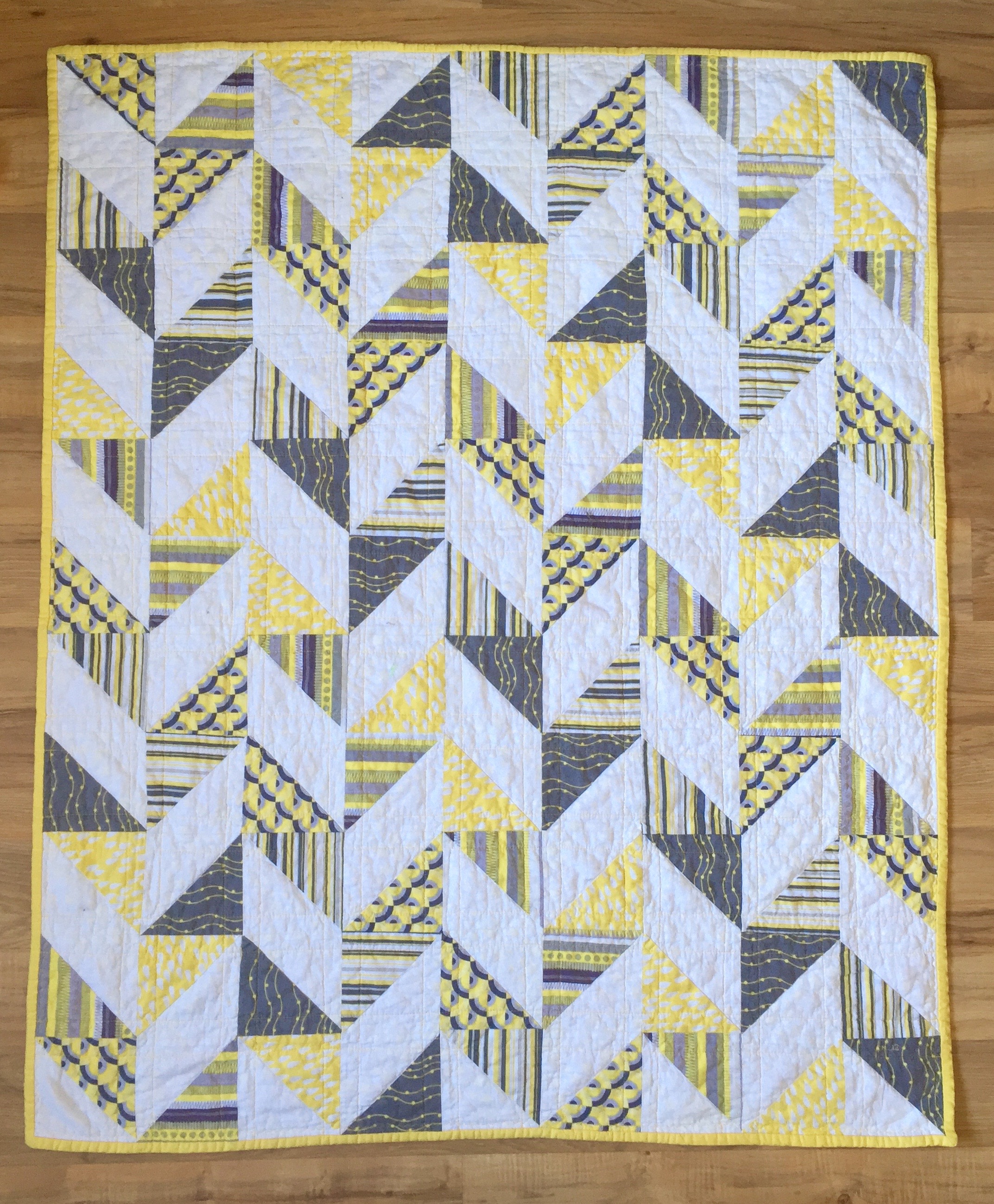This is my all time favorite quilt I ever made. Probably because it was the first quilt I made for my first child and there's a certain sentimental attachment in that.
It's yellow because I picked out the fabric when I first found out I was pregnant and then I got terrible morning sickness so I didn't finish it until I was in my third trimester.
But also because it came out looking just plain awesome.
- It's composed entirely of half square triangles.
- Each half square triangle unit is half print fabric and half white.
- The half square triangle units are arranged into columns so that on the horizontal seams of the finished quilt top, print edges touch print edges and white edges touch white edges.
- Every other column is offset so that on the vertical seams of the finished quilt top, print edges touch white edges.
The most common question I get about this quilt is "what pattern did you use?"
Here's the thing. I didn't use a pattern. I designed it myself by playing around with ways I could arrange half square triangles until I found an arrangement of pieces I liked and then I got to sewing it.
But since people just kept asking, I wrote one. This particular quilt uses charm squares (that I cut myself from standard yardage because I wanted this to ultimately be a quilt you could make with charm squares) and a block variation from the group based on a classic Streak of Lightning block. Click here to get the Half and Half Quilt Pattern + eBook.






130 quilt blocks that all use exactly the same amounts of fabric so it’s easy to mix and match.
The pattern includes material requirements and instructions to make half square triangle quilts from craft size to king size and is fat quarter, fat eighth, yardage, jelly roll, charm square, and layer cake friendly.